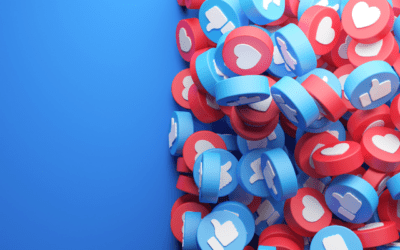What’s your B2B marketing score heading into 2020?
With 2019 drawing to an end, our Hop Skip crew has been looking ahead to 2020 and talking about the top marketing trends we see in B2B. Here’s our list of must-do tactics—think of it as a B2B marketing scorecard—against which you can measure your marketing plans for next year.
AI-driven lead nurturing
While the idea of implementing AI feels completely overwhelming to most companies, it shouldn’t. Increasingly, artificial intelligence (AI) is showing up in our daily lives—including in our internet-based communications. Chatbots and algorithms have added enormous value in predicting and answering common inquiries, and as the technology improves it comes ever closer to deciphering intent. When we understand our visitor’s intent, we’re in a much better position to nurture that lead. Implementing AI can enable us to respond to our leads fasters and more meaningfully, while also reducing our overhead by handling common questions upfront.
Social presence for both customers and prospects
The importance of a social media presence for B2C companies is clear: by posting relevant, enticing, and value-added content, B2Cs are trying to attract customers. The change in focus from individuals to companies can distract B2B organizations from the crux of their marketing task: cultivating relationships. Social media is the natural place to express brand values and personality, respond to customer feedback, and offer loyalty incentives. In fact, social is so powerful that CRM (ie. website) software embeds it into its programs. Here are some of the top reasons why B2B companies should use social media marketing:
-
Customers are on social media
-
Customers are looking for support
-
Business partners use social media
-
Social media drives customers to your website
-
Social media promotes sales
The bottom line is social media is social. It’s where your prospects are and it’s where you should be, too.
Bonus points for video
If you’re not convinced that video content is worth the production time, take a look at these statistics from the 2019 Hubspot marketing report:
-
Video drives a 157% increase in organic traffic from search engine results pages (Wordstream, 2018); a video thumbnail in the search results can double your search traffic (Search Engine Journal, 2018); and, having videos on landing pages will increase conversions by 86% (Wordstream, 2018)
-
About 20% of people will read the text on a page, but 80% of people will watch a video (My SMN, 2017)
-
Video will represent 82% of all IP traffic in 2021 (Business Insider, 2017) Overlooking video is an enormous marketing mistake that affects your ability to attract, engage, and convert leads.
In early 2020 we’ll be unveiling some new video work we’re doing for one of our clients. It’ll be used in ads, social media and on their website. Gotta love a triple whammy! Stay tuned.
Improved SEO
Search engine optimization (SEO) is absolutely critical to your search engine rankings, which in turn are essential if you want your customers to find you. These days, the stakes are higher than ever, with a full 75% of users looking at only the first page of Google search results, according to Hubspot. With ever-changing algorithms, your best bet is to include organic, or “natural” search results, which refers to unpaid results (as opposed to pay-per-click advertising). Organic search engine optimization involves a continuous cycle of targeting your keywords and optimizing your pages to reach your leads before your competitors do. This is not simple, but there are some extremely compelling reasons to invest the time into organic search.
-
Unlike pay-per-click ads, organic search is free
-
It increases lead generation
-
It pays off in the long run
Pay-per-click marketing
Just because you’ve invested in organic search doesn’t mean there’s no need for pay-per-click (PPC) marketing! The benefits of PPC include:
-
The ability to ramp up a campaign—fast (you can slowly shift focus to organic traffic once your SEO work has had time to take effect)
-
You can run comparison tests with your advertisements to optimize your results
-
Commensurate with your budget, you will appear in more search results
-
Retargeting allows you to show ads to whoever visited your website
Search
One simple and effective marketing strategy involves improving your B2B ranking on Google My Business. This involves setting up and fully populating your account (a 10-minute task), asking for reviews from happy customers (super easy—just bake it into your process), posting frequently, and using visuals in your listing. None of this is rocket science, but a Google Business account can:
-
Increase your website traffic
-
Quickly provide customers and prospects with your business information
-
Increase your search engine results
-
Provide location-based search engine marketing
Website
Your website has long been your number one marketing and sales tool—and 2020 just might be the year to give yours a redesign. If your site is dated, either in functionality or design, you could be losing out on leads and sales. Here are the top reasons why your site might be due for a refresh or redevelopment:
-
Your site uses outdated technology (Flash, for example), is slow, or doesn’t meet the latest requirements (like displaying properly on mobile)
-
Your business or offerings have changed
-
Your site has a high bounce rate, meaning visitors are not finding what they want on your pages
It’s good marketing practice to make sure your site is in tip-top condition, technologically and in terms of content.
That’s the list from our team here at Hop Skip! How many of these tactics can you count as part of your 2020 marketing plan? Well executed, a healthy combination of these tactics could mean a winning year.


